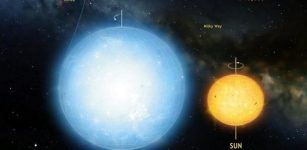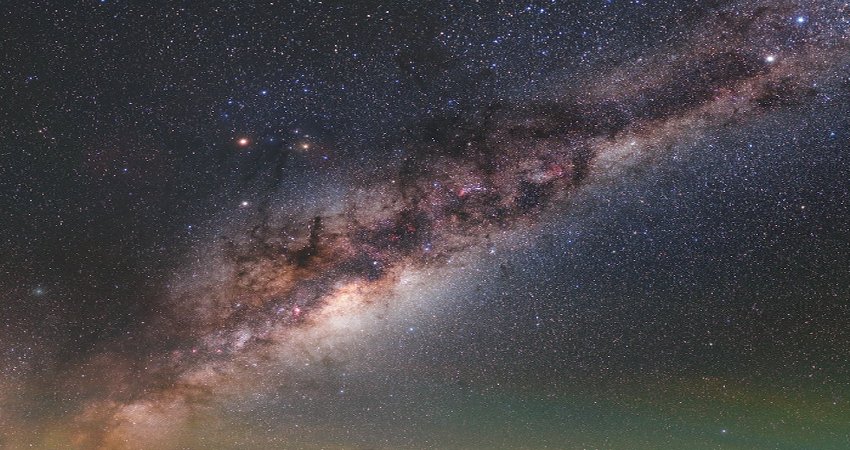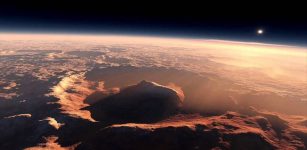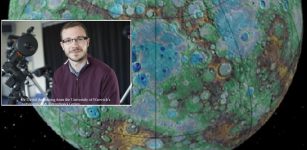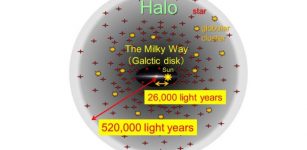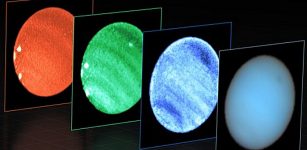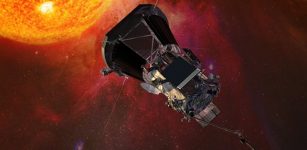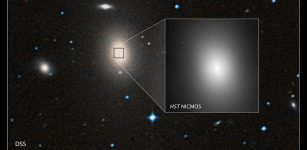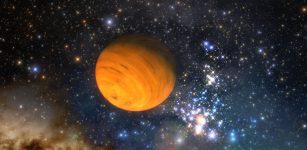New Neptune-Sized Exoplanet G 9-40b Identified With HPF Instrument
Eddie Gonzales Jr. – MessageToEagle.com – Astronomers have confirmed the existence of a new exoplanet – a planet outside the Solar System, using the Habitable-zone Planet Finder (HPF), an astronomical spectrograph, recently installed on the 10m Hobby-Eberly Telescope at McDonald Observatory in Texas.
 A candidate planet outside our solar system was validated using data from the Habitable-zone Planet Finder Spectrograph (left, image credit: Gudmundur Stefansson), a Penn State-led near-infrared spectrograph recently installed on the 10m Hobby-Eberly Telescope at McDonald Observatory in Texas (right, image credit: Ethan Tweedie Photography).
A candidate planet outside our solar system was validated using data from the Habitable-zone Planet Finder Spectrograph (left, image credit: Gudmundur Stefansson), a Penn State-led near-infrared spectrograph recently installed on the 10m Hobby-Eberly Telescope at McDonald Observatory in Texas (right, image credit: Ethan Tweedie Photography).
The planet, called G 9-40b, is about twice the size of the Earth, but likely closer in size to Neptune, and orbits its low mass host star, an M dwarf star, only 100 light-years from Earth.
“G 9-40b is amongst the top twenty closest transiting planets known, which makes this discovery really exciting,” Guðmundur Stefánsson, lead author of the paper, and a former Ph.D. student at Penn State who is currently a postdoctoral fellow at Princeton University said in a press release.
“Further, due to its large transit depth, G 9-40b is an excellent candidate exoplanet to study its atmospheric composition with future space telescopes.”
“The spectroscopic observations from HPF allowed us to place an upper bound of 12 Earth masses on the mass of the planet,” said Caleb Cañas, a graduate student at Penn State and an author of the paper.
“This demonstrates that a planet is causing the dips in light from the host star, rather than another astrophysical object such as a background star. We hope to obtain more observations with HPF to precisely measure its mass, which will allow us to constrain its bulk composition and differentiate between a predominantly rocky or gas-rich composition.”
HPF was delivered to the 10m Hobby-Eberly Telescope at McDonald Observatory in late 2017 and started full science operations in late 2018. The instrument detects and characterizes planets in the habitable zone—the region around the star where a planet could sustain liquid water on its surface—around nearby low-mass stars.
The HPF’s unique feature is its precise spectral calibration with a laser frequency comb built by collaborators at the National Institute of Standards and Technology and the University of Colorado Boulder.
“Using HPF, we are currently surveying the nearest low-mass stars—also called M-dwarfs, which are the most common stars in the galaxy—with the goal of discovering exoplanets in our stellar neighborhood,” said Suvrath Mahadevan, professor of astronomy and astrophysics at Penn State and principal investigator of the HPF spectrograph.
Also, other telescopes like the 3.5m telescope at Apache Point Observatory and the 3m Shane Telescope at Lick Observatory contributed with observations that helped to confirm the identification of the planet, called G 9-40b.
Written by Eddie Gonzales Jr. – MessageToEagle.com Staff

